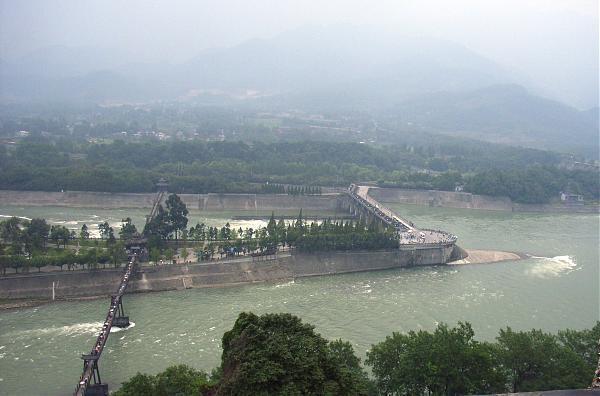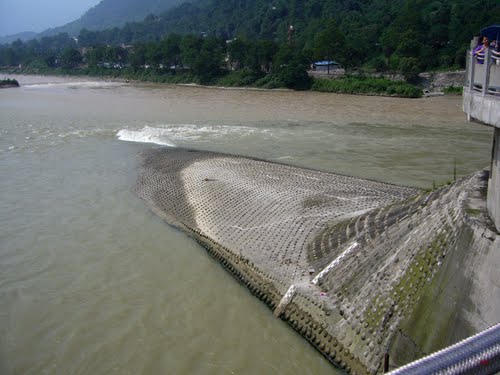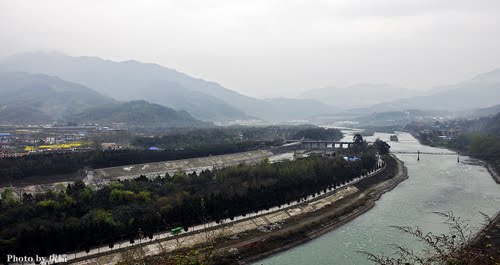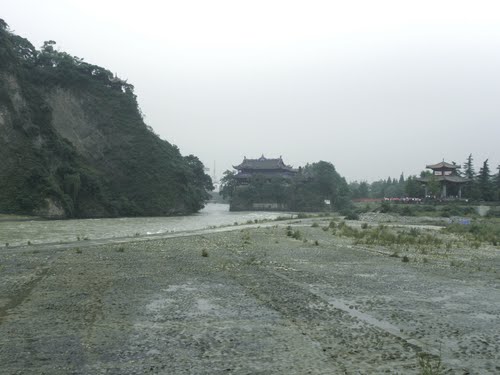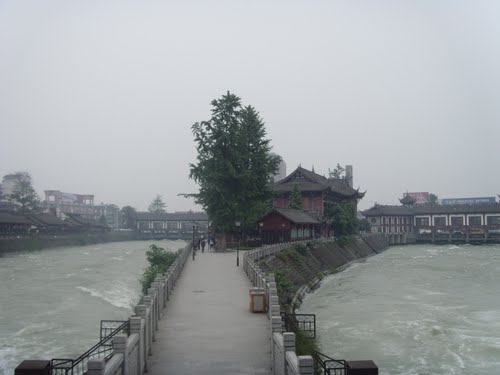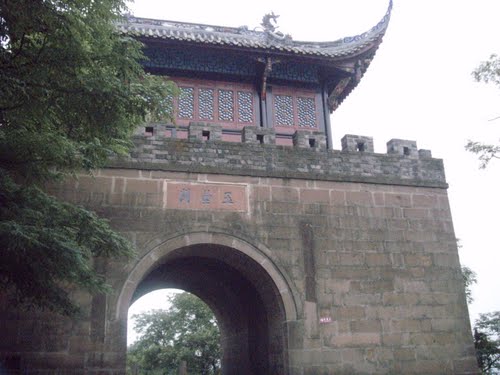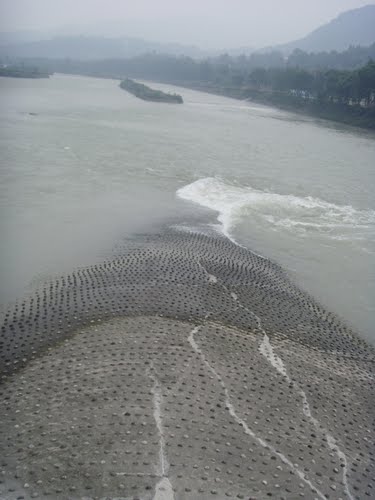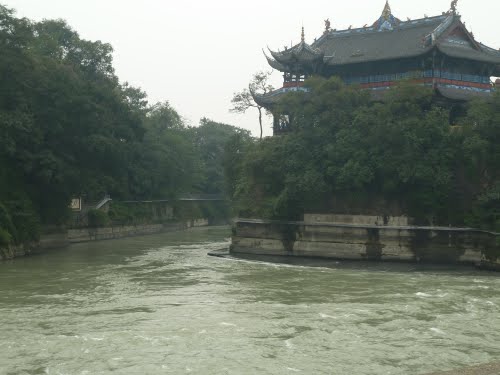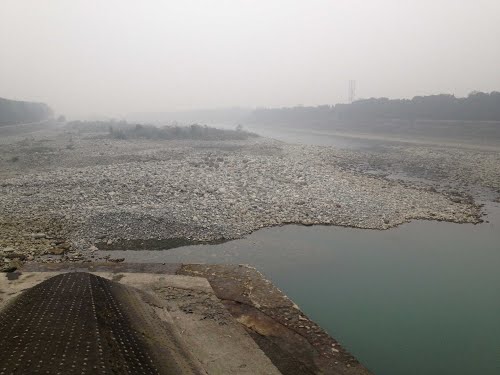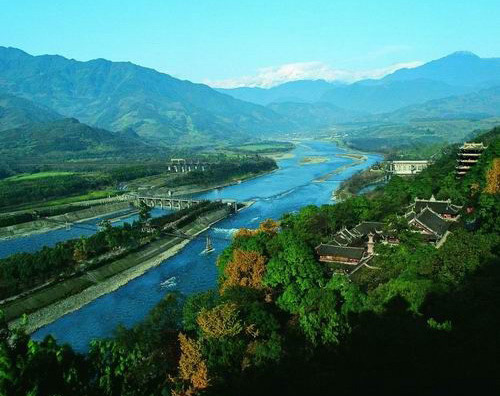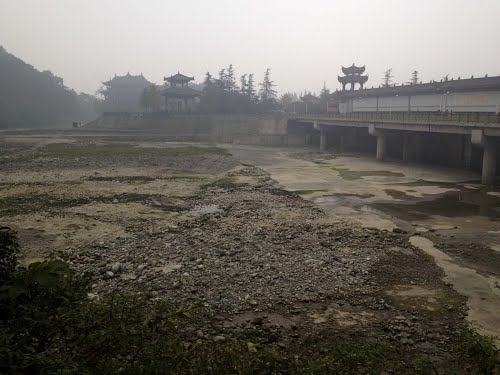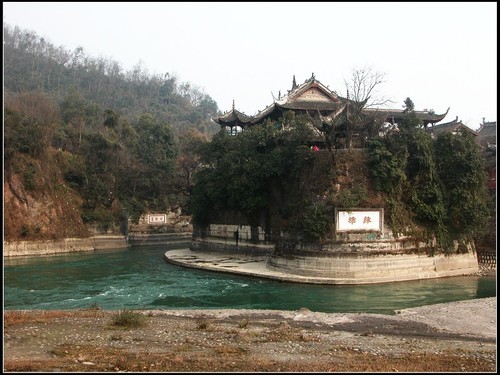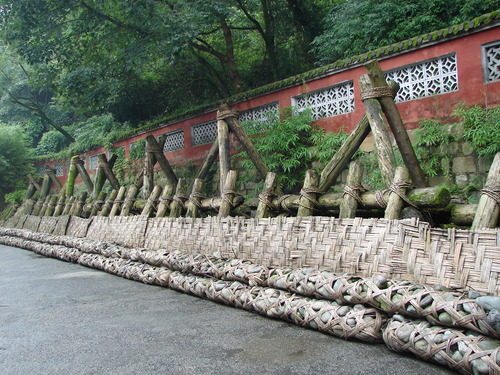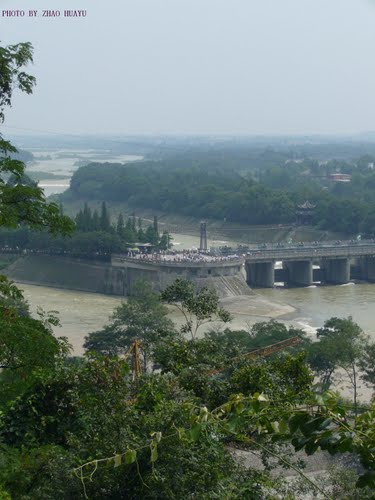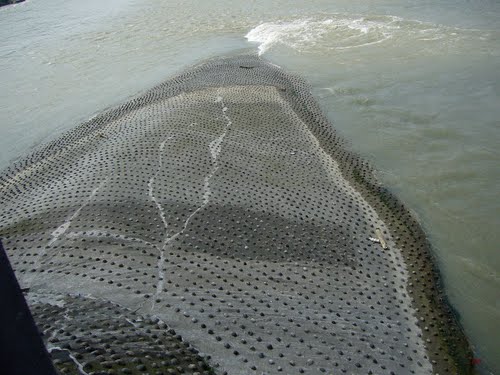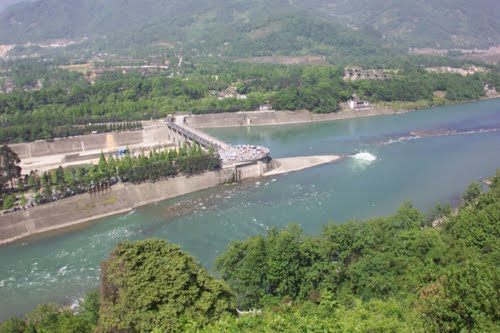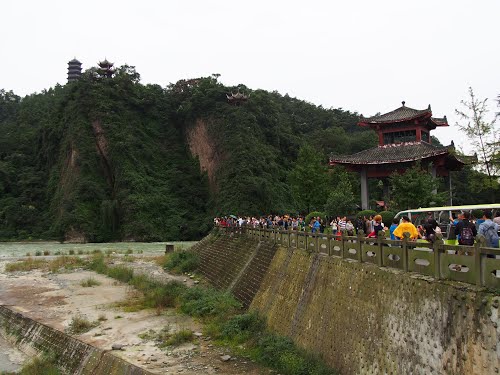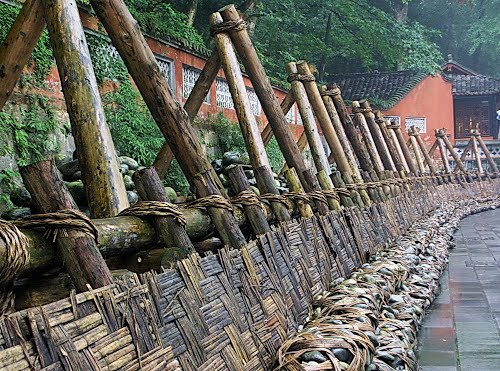Dujiangyan is an irrigation infrastructure built in 256 BC during the Warring States period of China by the State of Qin. It is located in the Min River in Sichuan, China, near the capital Chengdu. It is still in use today to irrigate over 5,300 km² of land in the region. The Dujiangyan along with the Zhengguo Canal in Shaanxi and the Lingqu Canal in Guangxi are known as “The three great hydraulic engineering projects of the Qin dynasty”.
History
Planning
During the Warring States period, people who lived along the banks of the Min River were plagued by annual flooding. Qin governor Li Bing investigated the problem and discovered that the river was swelled by fast flowing spring melt-water from the local mountains that burst the banks when it reached the slow moving and heavily silted stretch below.
One solution would have been to build a dam but Li Bing had also been charged with keeping the waterway open for military vessels to supply troops on the frontier, so instead he proposed to construct an artificial levee to redirect a portion of the river's flow and then to cut a channel through Mount Yulei to discharge the excess water upon the dry Chengdu Plain beyond.
Construction
Li Bing received 100,000 taels of silver for the project from King Zhao of Qin and set to work with a team said to number tens of thousands. The levee was constructed from long sausage-shaped baskets of woven bamboo filled with stones known as Zhulong held in place by wooden tripods known as Macha. The massive construction took four years to complete.
Cutting the channel proved to be a far greater problem as the tools available to Li Bing at the time, prior to the invention of gunpowder, were unable to penetrate the hard rock of the mountain so he used a combination of fire and water to heat and cool the rocks until they cracked and could be removed. After eight years of work a 20 metres wide channel had been gouged through the mountain.
Legacy
After the system was finished, no more floods occurred. The irrigation made Sichuan the most productive agricultural place in China. On the east side of Dujiangyan, people built a shrine in remembrance of Li Bing.
Li Bing’s construction is also credited with giving the people of the region a laid-back attitude to life, by eliminating disaster and ensuring a regular and bountiful harvest, it has left them with plenty of free time.Today, Dujiangyan has become a major tourist attraction. It is also admired by scientists from around the world, because of one feature. Unlike contemporary dams where the water is blocked with a huge wall, Dujiangyan still lets water go through naturally. Modern dams do not let fish go through very well, since each dam is a wall and the water levels are different. In 2000, Dujiangyan became a UNESCO World Heritage Site.
2008 Sichuan earthquake
On May 12, 2008 a massive earthquake struck the Dujiangyan area. Initial reports indicated that the Yuzui Levee was cracked but not severely damaged.

